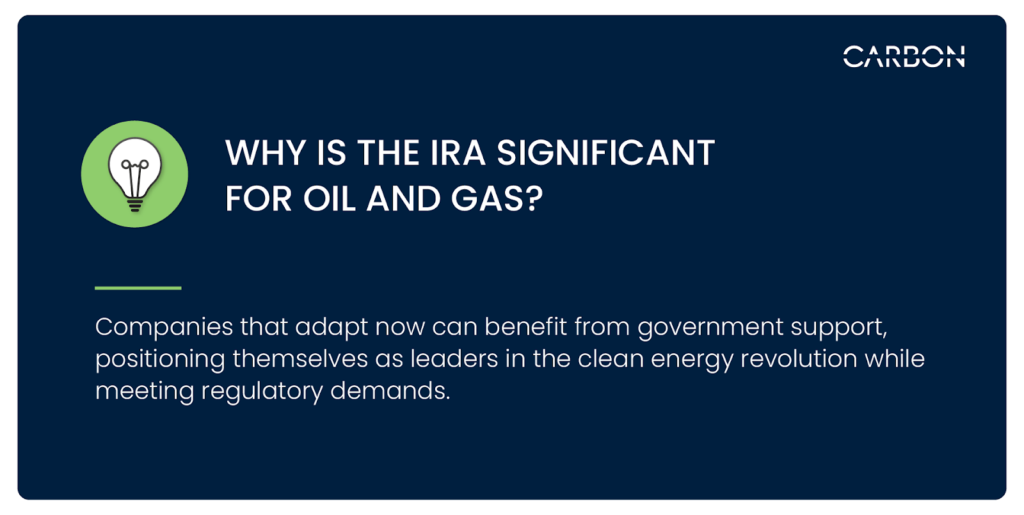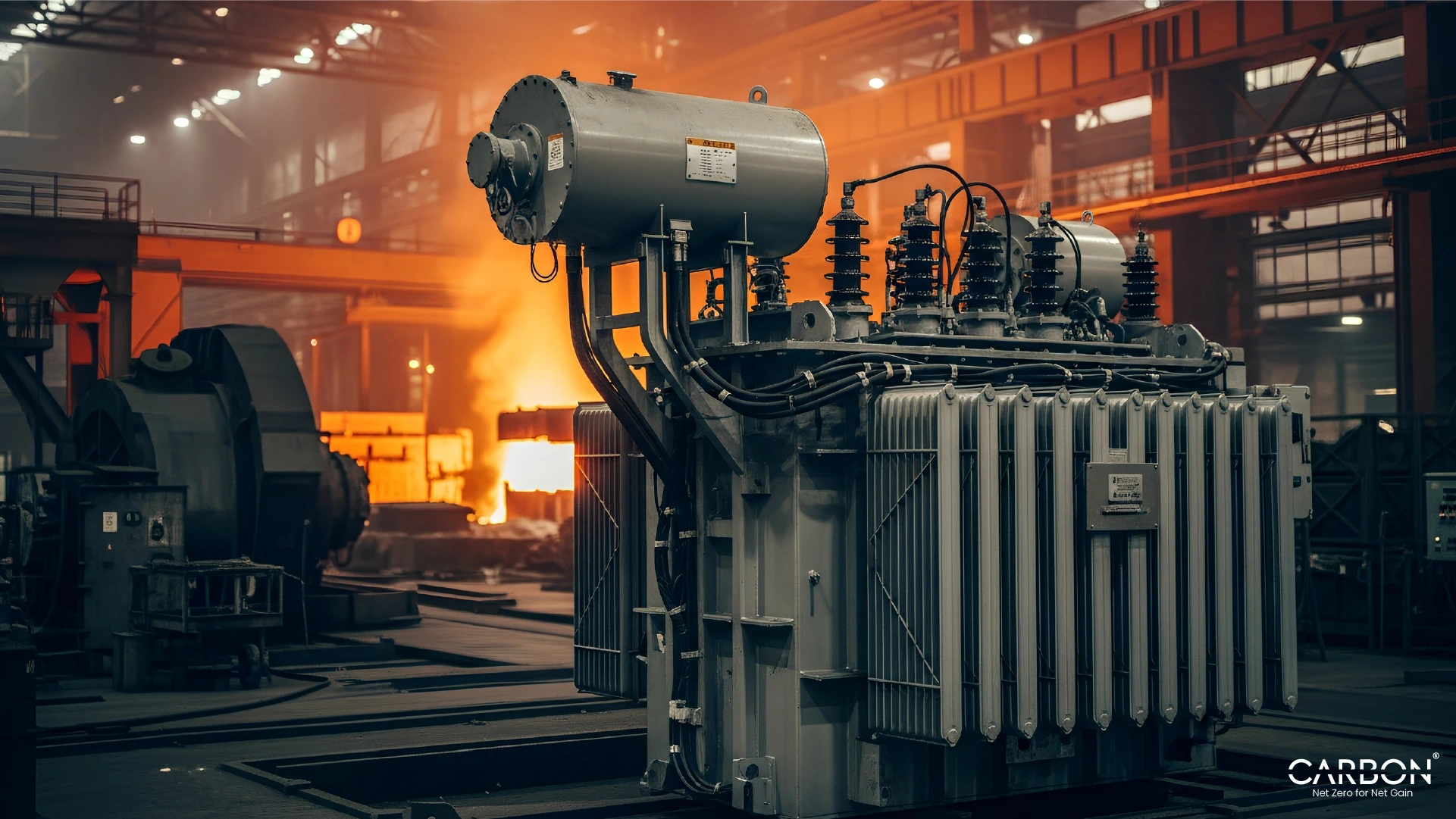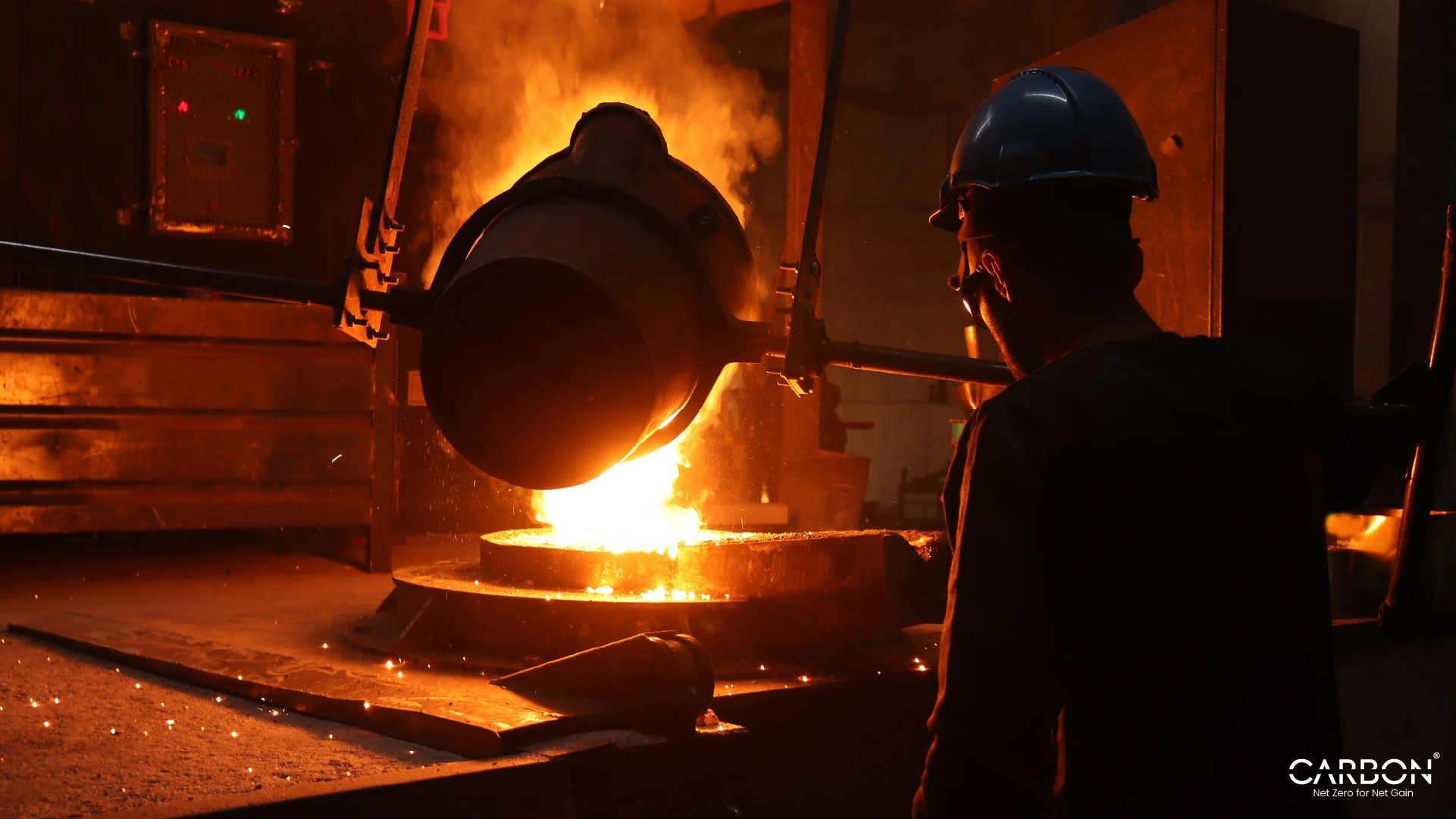Pressure is mounting.
The clock is ticking.
The oil and gas industry is under increasing scrutiny.
Why? The time has for the industry to transition toward clean energy while maintaining profitability.
As the world inches (no, jogs sems more relevant) towards sustainability, companies are navigating a complex landscape of regulations, market shifts, and investor demands.
The key to staying competitive lies in finding a balance between reducing emissions and maintaining strong financial performance.
But here’s the challenge: while the opportunities for clean energy investments are growing, many industry leaders remain uncertain about how to leverage them—especially under the complexities of the Inflation Reduction Act (IRA).
The IRA offers significant financial incentives, but understanding how to fully capitalize on them can be overwhelming.
What companies need are the right strategies to unlock the potential of clean energy investments without sacrificing their bottom line.
What is the Inflation Reduction Act?
The IRA is coming. Sounds ominous, doesn’t it?
But the Inflation Reduction Act (IRA) is more than just a piece of legislation—it’s a game-changer for the energy sector.
Signed into law in 2022, the IRA aims to address climate change by incentivizing clean energy investments and reducing carbon emissions across industries. It sets aside $369-400 billion for energy security and climate-related initiatives, making it the largest U.S. investment in climate action to date.
For oil and gas companies, the IRA pushes for a shift away from fossil fuels, encouraging industries to adopt clean energy solutions like hydrogen, carbon capture, and renewable energy projects.
On the other hand, it offers significant financial incentives, including tax credits for companies that embrace these technologies.
The IRA’s goal is to accelerate the clean energy transition, making it essential for oil and gas companies to understand how to navigate its provisions.

Tax Incentives for Oil & Gas Companies Under the IRA
The Inflation Reduction Act (IRA) doesn’t just push for clean energy—it rewards companies that invest in it.
For oil and gas companies, this presents a golden opportunity to leverage tax incentives that can reduce operational costs while transitioning toward sustainability.
Carbon Capture Incentive
One of the key incentives is the tax credit for carbon capture, which offers up to $85 per ton of CO2 captured and stored. This is a major boost for companies looking to reduce their carbon footprint while staying profitable.
Hydrogen Production Incentive
There are also tax credits for hydrogen production, where companies producing low-carbon hydrogen can claim up to $3 per kilogram.
Renewable Energy Incentive
Additionally, the IRA provides tax credits for investments in renewable energy projects, such as wind and solar.
Oil and gas companies looking to diversify their energy portfolio can take advantage of these credits to reduce costs on large-scale renewable energy infrastructure.
Using the IRA to Increase Profitability Through Clean Energy Investments
Can clean energy really drive profitability for oil and gas companies? Under the Inflation Reduction Act (IRA), the answer is yes.
Here are key strategies for leveraging the IRA to boost profitability through clean energy investments:
- Tap Into Tax Credits for Wind and Solar: The IRA provides generous tax credits for companies investing in wind and solar projects. These credits help reduce upfront costs, making it easier for oil and gas companies to diversify their energy portfolio.
- Improve Energy Efficiency: Integrating clean energy technologies and carbon accounting software into existing operations enhances overall energy efficiency, reducing emissions and operational costs.
- Strengthen Regulatory Compliance: By leveraging the IRA’s tax incentives for clean energy, companies can align with evolving regulatory demands and avoid future penalties or fines related to emissions.
- Future-Proof Business Operations: Clean energy investments not only improve profitability today but also position companies to thrive in a low-carbon future. Reducing dependency on fossil fuels is a strategic way to secure long-term growth.
If you need help securing your business and moving towards a sustainable future, contact CarbonMinus at www.carbonminus.com. We help you stay updated with all that’s happening and prepare energy management solutions tailored to your industry.
Carbon Capture and Storage (CCS) and the IRA
Carbon capture and storage (CCS) is quickly becoming one of the most valuable tools in the oil and gas industry’s decarbonization toolkit—and the Inflation Reduction Act (IRA) is making it even more attractive.
- Offset Carbon Emissions to Meet Sustainability Targets: CCS allows companies to capture emissions at the source, significantly reducing their carbon footprint and helping them meet sustainability goals and net-zero targets.
- Compliance with Stricter Regulations: As governments tighten regulations on carbon emissions, CCS provides a way to stay compliant while continuing oil and gas operations. The IRA helps offset the costs of compliance with these environmental standards.
- Reduce Operational Costs Over Time: By utilizing CCS, oil and gas companies can avoid potential future costs related to carbon taxes or penalties for non-compliance. The IRA’s tax incentives make this an even more cost-effective solution.
- Enhance Environmental Reputation: Companies that invest in CCS can position themselves as leaders in carbon management, gaining recognition for their efforts to address climate change and improve sustainability.
- Access Government Support for CCS Projects: The IRA’s incentives make it easier for companies to invest in large-scale CCS projects by providing financial assistance to offset infrastructure and operational costs.
- Long-Term Strategic Investment: Beyond immediate tax benefits, investing in CCS helps future-proof operations against evolving climate regulations, ensuring long-term profitability and sustainability.
Seizing the Opportunity for a Profitable and Sustainable Future
Ready to optimize your energy transition strategy? Consult with CarbonMinus to maximize opportunities for sustainable growth and drive long-term success.
Book a demo at www.carbonminus.com.
Frequently Asked Questions
1. What is the Inflation Reduction Act, and how does it impact the oil and gas industry?
The Inflation Reduction Act (IRA) is a U.S. law aimed at reducing inflation, investing in clean energy, and combating climate change. For the oil and gas industry, the IRA introduces significant incentives for clean energy investments, like carbon capture and renewable energy, while encouraging a shift away from fossil fuels through tax credits and penalties for non-compliance with emissions targets.
2. What tax incentives are available to oil and gas companies under the IRA?
Under the IRA, oil and gas companies can benefit from tax credits for carbon capture and storage (CCS), hydrogen production, and investments in renewable energy like solar and wind. For example, the IRA offers up to $85 per ton of captured CO2 and up to $3 per kilogram of low-carbon hydrogen produced.
3. How can oil and gas companies use the IRA to reduce costs and increase profitability through clean energy investments?
By leveraging IRA tax credits for carbon capture, hydrogen production, and renewable energy projects, oil and gas companies can significantly lower the upfront costs of clean energy infrastructure. This allows them to invest in clean energy technologies that reduce operational expenses, improve energy efficiency, and open up new revenue streams, driving both profitability and sustainability.
4. What are the benefits of carbon capture and storage (CCS) under the IRA?
The IRA offers generous tax credits—up to $85 per ton of CO2 captured—making carbon capture and storage (CCS) a financially viable option for reducing emissions. By investing in CCS, oil and gas companies can lower their carbon footprint, meet regulatory requirements, and benefit from government incentives, all while continuing operations in a more sustainable way.




